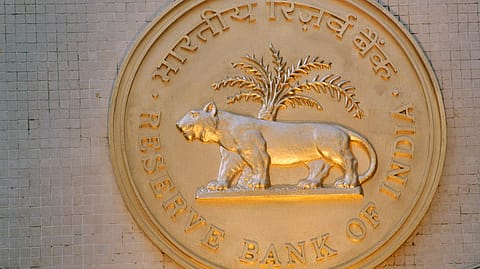GDP to grow at 6.6% in FY25: RBI
Both retail loans and bank lending to NBFCs declined, with a CAGR of 26.9% and 28.7% between September 2021 and September 2023

GDP is expected to grow at 6.6% in FY25, due to rural consumption revival, increase in government consumption and investment, and growth in services exports, according to the Reserve Bank of India (RBI) report released today. “Real GDP growth is expected to recover in Q3 and Q4 of 2024-25 supported by pick up in domestic drivers.”
The RBI states that in the Indian financial system, NBFCs (Non-Banking Financial Companies) are the largest receivers of funds, whereas mutual funds remain the largest fund providers. NBFCs remained the largest issuers in the corporate bond market, with a preference towards private placement for bonds listed on recognised exchanges. Both retail loans and bank lending to NBFCs declined, with a CAGR of 26.9% and 28.7% between September 2021 and September 2023. Additionally, unsecured retail loans also reduced from 27% to 15.6% over this period.
“After the post-pandemic acceleration, however, credit by both banks and non-banking financial companies (NBFCs) in India has recorded some moderation across major sectors during 2024 so far,” the RBI report says.
NBFCs’ credit growth slumped from 22.1% a year ago, to 16%. This decline was attributed to the high base effect and the increased risk weight for consumer lending prescribed by the RBI in November 2023.
Credit growth for NBFCs-ICCs (Investment and credit companies), the largest category of NBFCs, remained strong in September 2024, it notes. “The second largest category of NBFCs (viz., NBFCIFCs) continued to slow down further in H1: 202425 and recorded low single digit credit growth. Advances by HFCs in the upper layer have grown by 11.6% (y-o-y) as of end September 2024,” it adds.
Gross non-performing assets (GNPA) of government-owned NBFCs improved to 2% while that of privately owned NBFCs of NBFC-ML (Middle layer) stood at 5.3% in September 2024, it notes.
The NBFC sector as a whole continues to remain strong with CRAR (capital to risk weighted assets ratio) of 26.1% in September 2024. Net interest margins (NIM) at 5.1%, while RoA (Return on Assets) at 2.9%. Meanwhile, GNPA stood at 3.4% of gross loans and advances.
Global public debt is set to exceed $100 trillion (93% of global GDP), by the end of 2024, driven majorly by the US and China, the report says. This surge in global public debt is expected to surpass 100% of GDP by 2030, it adds.